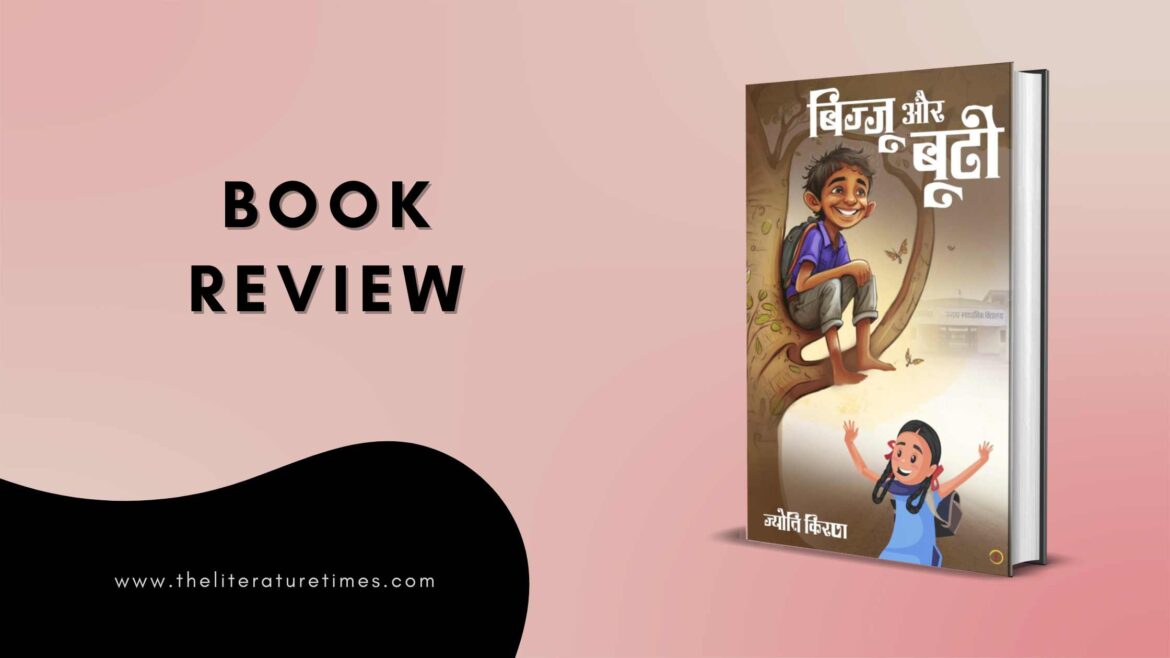Tales featuring children to drive messages of social importance have always been a strong appeal due to the innocence through which these issues are raised. Even though they are meant for the enjoyment of children, it is the author’s skill that makes them a recommended reading even for grown ups. Jyoti Kiran writes in the same direction in her book, “Bijju aur Buti.” As interesting and explicit as the title is, it clearly indicates the story centering around 2 children who are siblings but see the world from completely different perspectives. This difference of perspectives becomes the food for thought for the readers. At the same time, the author keeps the innocence of the book intact and opens the opportunity for readers to read between the lines. This increases the appeal and expands the reader base for the book. At the same time, it is also a breath of fresh air that takes the readers into the imaginative land of a small town of Chhattisgarh.
After having successfully published one children’s book after another, the author Jyoti Kiran establishes herself as an author with a profound insight into children’s psychology, their issues and the way they see the world. It is also this approach that gives the readers a peek into their minds, and they may also find children in their homes who are interested in reading about “Bijju aur Buti.” In this direction, the book serves the purpose of entertaining and sparking the imagination of the readers and giving them an insight into the problems that children of ordinary India face.
While Buti as the elder child, is portrayed as the responsible one, her dreams are rooted in the routine aspirations of people. Every child wants to grow up into a successful professional in their desired field and Buti’s personality represents and resonates with this idea. Her awareness of the difficult conditions they live in and her desire to have a better life for herself also shows the aspirations of a child in any household. This awareness also shows her maturity at a young age and the intended message of the author on women education. But the author’s craft in conveying this is noteworthy. Mostly, the baton is in the hands of a third-person narrator who has every detail about the life of the kids; they do take center stage at times to share their thoughts and reactions.
Bijju, on the other hand wins the readers’ hearts through his innocence and, at the same time, also throws light on the living conditions of students in schools and at home. His innocence is the key to highlighting the issues that may otherwise go
unnoticed. Keeping the story in an unnamed town is again another way for the author to make sure that the story is relatable and close to the hearts of the readers of any place and location they are reading from. This factor of relatability is one of the strongest points of “Bijju aur Buti.” While it may be directly relatable for children, the openness to reading between the lines attracts even the grown up readers.
The subjects including education conditions, love among siblings, difficulties for a family in meeting ends, children’s dreams, and the bonds between families form the central thematic concerns of “Bijju aur Buti” which resonates throughout the book. These subjects have formed a fragment of people’s lives in the past and continue to do so even in the present. Since our country is still on the road to development, the validity of these subjects will remain even in the future generations.
Another feature of the book that will ensure it’s relatability is the author’s use of hindi language to write and share a story that could have been born in any Indian town or village. Language has the power to appeal more strongly than any second language. “Bijju aur Buti” would find more popularity because of the language used by the author. The subjects mentioned in the book and themes of the book are also added factors that would ensure that the book finds readers even in later generations.
“Bijju and Buti” is recommended to all those readers who are looking for a refreshing reading of a children’s story coming from the world of children from a corner of India. It is also recommended to readers who like to read stories that could be in any home and in any person’s life. It is also recommended to Hindi readers who may want to try something new from the author’s pen. Most importantly, this book will find an instant appeal in children as a bed time story, which is why it is strongly recommended for the younger readers. It is also recommended to the grown ups for the critical subjects it discusses and the skill with which the author highlights them closely without directly hinting at them.



